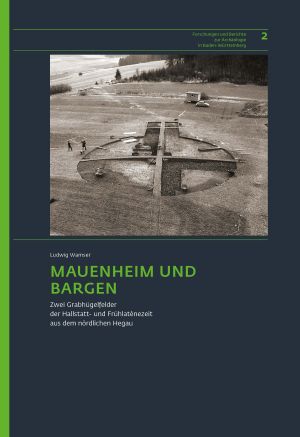Bräuning, Andrea
Die eisenzeitlichen Grabhügel von Vergina: Die Ausgrabungen von Photis Petsas 1960-1961
The village of Vergina stands on the ancient necropolis of Aigai, the first capital of the Macedonian Empire. With over 300 burial mounds still visible in the terrain, it dates from the early Iron Age (around 1000 BC) to the Hellenistic period (2nd century BC).
This volume presents for the first time the features and finds of the rescue excavations under the direction of Ph. Petsas in the course of road construction in 1960-1961. Together with the results of the systematic excavations by M. Andronikos, representative material is available to investigate the chronology, chorology and organisation of the necropolis and to enable statements to be made about Macedonian society in the early Iron Age.
Mauenheim und Bargen: Zwei Grabhügelfelder der Hallstatt- und Frühlatènezeit aus dem nördlichen Hegau
The monograph deals with the Hallstatt cemetery of Immendingen-Mauenheim (district of Tuttlingen), which comprises 23 burial mounds and at least 10 small cremation graves between the mounds, and with the necropolis of Engen-Bargen (district of Constance), which consists of five tumuli. Both sites are located about 700 m apart in the northern Hegau, a few kilometres south of the Danube, between the Alps and the Black Forest. The study is based on a dissertation from the 1970s and is supplemented by new research devoted to specific finds and social and economic aspects. Animal grave goods from the tombs were analysed achaeozoologically. Anthropological studies of the skeletons from the Hallstatt period as well as research on mobility and nutritional status of humans and animals contribute to the reconstruction of Iron Age living conditions in south-western Germany.








